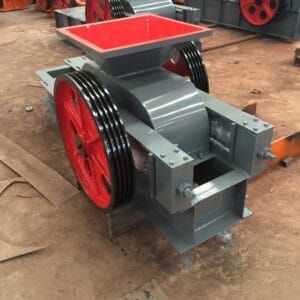
Rebirth of Waste Plastics: The Environmental Revolution of Plastic/Rubber Crushers
In front of mountains of waste plastics and used tires, mankind has been caught in a dilemma: landfill pollution of the soil, incineration release of toxic gases.

The emergence of plastic and rubber crusher, so that these “garbage” turned into recyclable resources, opened a silent environmental revolution.
First, from “garbage” to resources: the magic of the crusher
The core of the plastic crusher is a set of high-speed rotating alloy steel blades, they are hundreds of times per minute shear plastic bottles, films and even tubes up to 10 centimeters thick into uniform particles.
For high tenacity materials such as rubber tires,
the CNC blades adjust the speed intelligently to avoid tangling and ensure that the diameter of the shredded material is controlled at the reuse standard of 20-120mm.
A recycling station, tons of used mineral water bottles after crushing,
washing, drying, into crystal PET particles, re-entering the injection molding machine into hangers and storage boxes.
Second, technology-enabled environmental protection guards
The latest generation of equipment has been equipped with material identification sensors, when the input medical waste plastics,
the system automatically switches the sealing mode to prevent the proliferation of hazardous substances; treatment of tires is to start the anti-twisting procedures,
real-time adjustment of blade gap to avoid jamming the machine.

A factory in Zhejiang introduced a slow shredder, energy consumption than the traditional model to reduce 30%, the noise of the night operation is only 75 decibels,
residential areas next to the recycling workshop from now on is no longer a nuisance.
Third, the secret weapon of the circular economy
In Yunnan Rubber Park, dual-axis shredder is turning waste tires into cushioning particles for soccer field lawns,
with a daily processing capacity of 400 kg per piece of equipment, turning black pollution into green infrastructure.
And an entrepreneurial team in Chaozhou utilizes a small shredder to process agricultural film waste into municipal flower boxes,
solving white pollution and creating jobs.
As stated in the German Environmental Protection Agency report: “Each ton of recycled plastic compared to virgin material production,
can reduce carbon emissions by 1.5 tons.
Fourth, the future outlook
The AI adaptive model to be launched in 2025 will automatically sort metal impurities through the visual recognition system,
and the precision of crushing will be improved to ±2mm.24 Some enterprises have even developed photovoltaic-driven crushing stations,
which can realize off-grid operation in the desert areas of Africa, and enable plastic recycling to cross the energy divide.
Seemingly bulky steel machine, in fact,
is connected to the pollution and rebirth of the time and space tunnel.
When the roar of the rotating blades, we hear not only the sound of material crushing,
but also the resounding footsteps of the resource recycling era.



